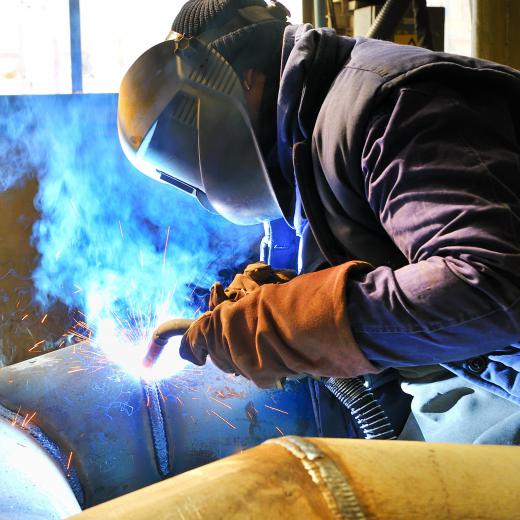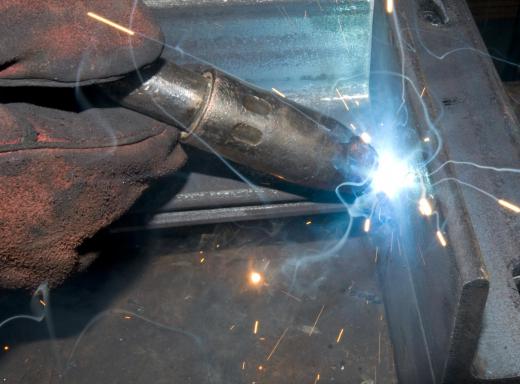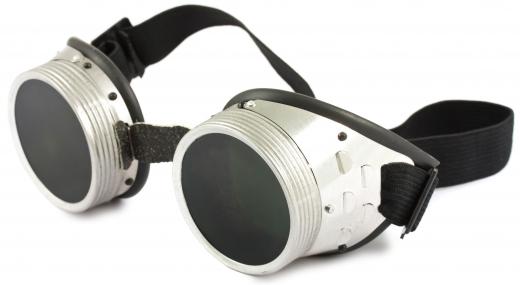A gas welder uses compressed gas and heated torches to cut metal, attach metal pieces together, polish glass, produce jewelry, and much more. Welding is a professional skill typically taught through a community college or trade school. This skilled trade is one of the oldest professional crafts and has been used around the world for centuries to join metals together and create new products.
In order to become a gas welder, candidates must complete a specialized trade program. This type of program is typically two to three months in length and culminates in a welding license or certificate. The skills necessary to become a welder include excellent hand and eye coordination, mechanical aptitude, and steady hands. Safety is a large part of any welder training program, as the risks of personal injury are quite high if the proper precautions are not taken.

There are three types of equipment used by a gas welder, all using different gases. Metal inert gas (MIG) welding is the easiest type of welding to learn. This process is very similar to using a hot gun. The unit itself is powered by electricity and uses an inert gas to control the splatter and location of the actual weld.
Tungsten inert gas (TIG) welding uses argon and a tungsten electrode to create the weld. The primary benefit of this type of welding is the ability to create a weld with no splatter. This is especially important in situations where the parts need to fit together almost seamlessly. Keep in mind that TIG welding equipment is more costly than other type of equipment but is often the best choice in high-visibility areas.

In oxyacetylene welding (oxy-welding), a metal filler is melted with the oxygen fueled torch. This type of welding is generally used to secure two pieces of metal together into a single unit. The heat generated is very high, and once the weld cools, the two units are permanently attached.
From a purely cosmetic perspective, TIG welding is the best option. There is no splatter to be sanded or filed off. In addition, an artistic pattern can be created in the weld itself, adding to the overall aesthetics of the piece. It is important to remember that this type of welding is not intended for structural joints, where the primary concern is strength, and not appearance.

The type of gas welder to use is based on the thickness of the materials. Oxy-welding is used for the thickest materials, while MIG welding can be used for materials between 0.020 and 0.0259 inches (0.5mm to 6.3mm). TIG welding is best used for thinner materials, generally with a thickness of less than 0.005 inches (0.125mm).
